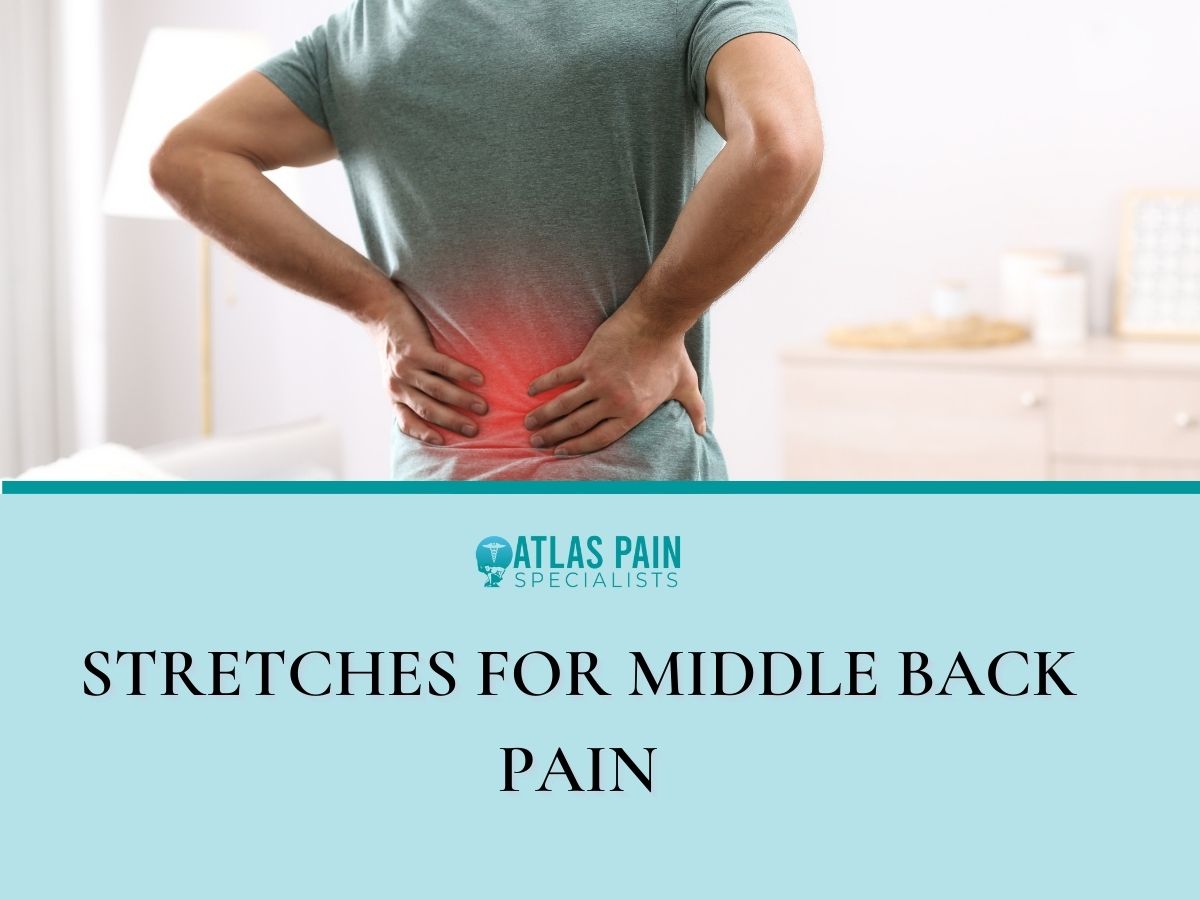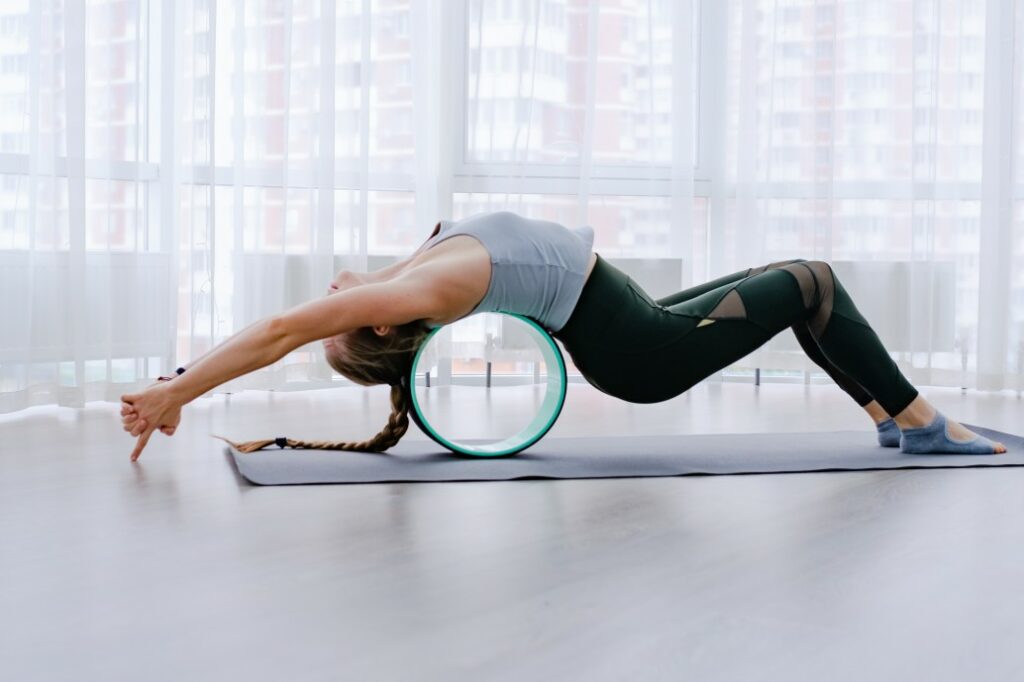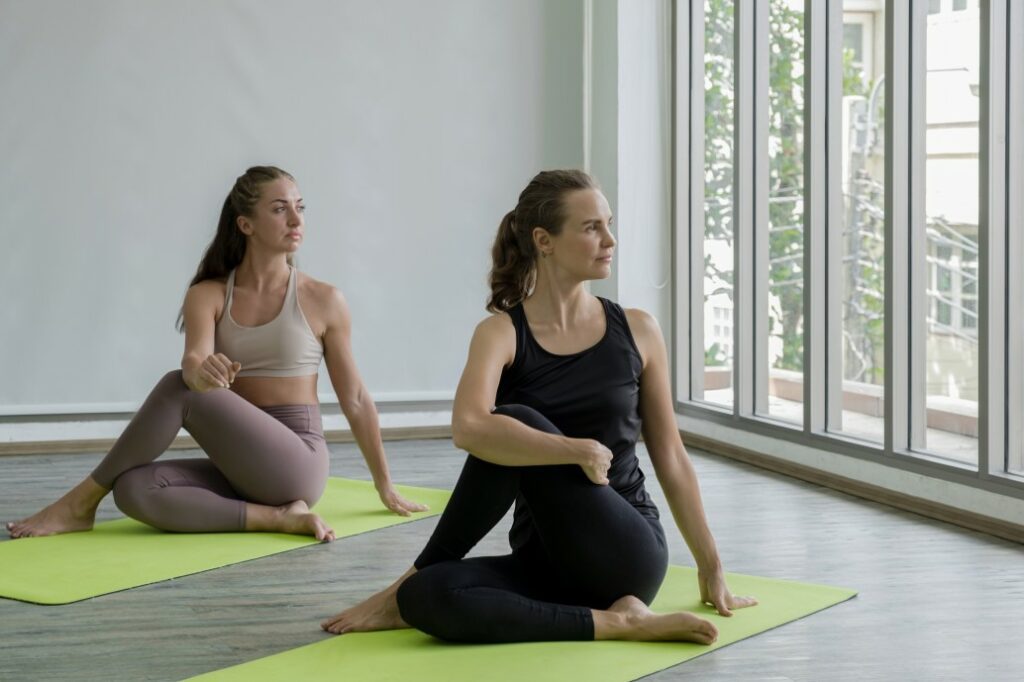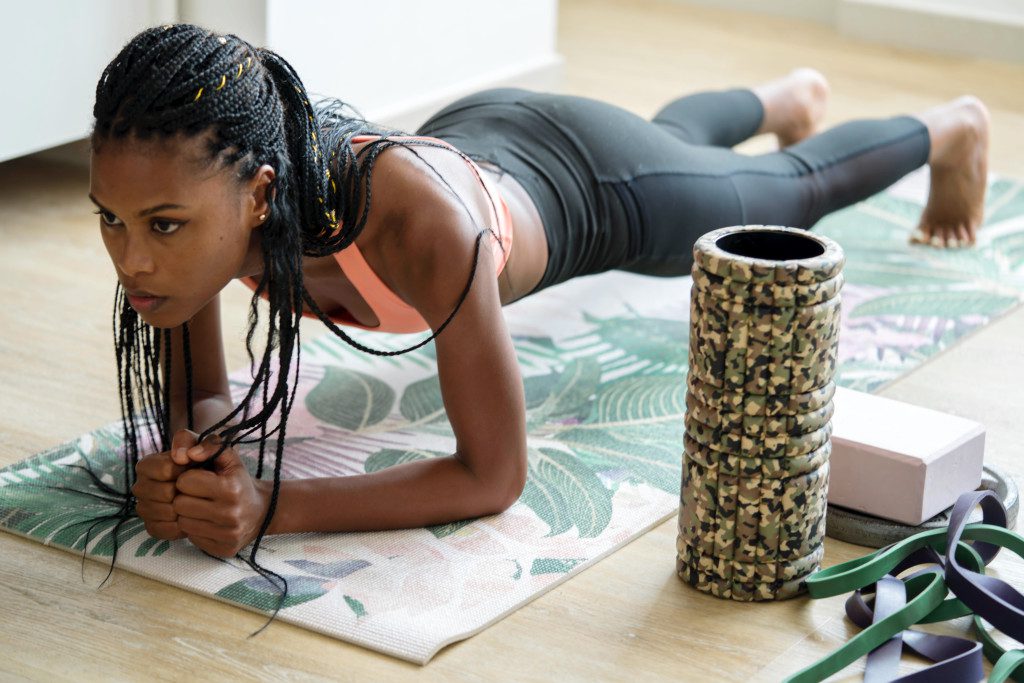

Stretches For Middle Back Pain
The middle back is built for structural support and to protect vital organs; it also has limited movement. Therefore, the middle back pain is harder to treat.
Since most of our daily activities involve back mobility, it is crucial to treat or prevent middle back pain naturally. These include stretches that involve exercises that work the middle back for a healthy back.
To understand how these exercises work, we’ll need to know the anatomy of the middle back and what causes this pain.
The Anatomy of the Middle Back
The upper and middle back make up the thoracic spine. They are made up of the T1-T12 thoracic vertebrae.
They have disks in-between them that cushion their movement and muscles and ligaments that hold them together.
They offer attachment points for the ribs, which encase vital organs such as the lungs and the heart. This makes them have less mobility as their primary function is support and protection.
Causes of Middle Back Pain
Middle back pain may be chronic or acute, depending on the cause. Trying to diagnose and treat the pain on your own may not be the best way to treat your condition. Home exercises and stretches may not be the best way to treat your condition.
The pain may be caused by
- Injury to the structures around the vertebrae like the ligaments and discs
- fracture of one or more of the vertebrae.
- A pinched nerve or vertebral pressure on one of the spinal nerves
- Poor walking or sitting posture
- Myofascial pain, which affects the muscles
- Osteoarthritis
- Fibromyalgia
- Overuse or strain on the support structures of the vertebrae
Other underlying medical conditions such as cancer or infection may also lead to middle back pain.
Symptoms, Diagnosis, and Treatment of Middle Back Pain
Symptoms may vary with the patient and the condition. General symptoms of middle back pain include
- Sharp, throbbing pain that may be dull or burning
- Limited back mobility
- Muscle stiffness
- Pain when standing after bending your back for a while
Diagnosis
The diagnosis involves imaging and a physical done by the medical practitioner.
Imaging devices like X-rays and MRIs help look for injuries such as broken vertebrae, bulging discs, and ligament tears.
A physical is through mobility stretches, and pressure touches on locating the source of the pain. A physical is usually done before imaging to narrow down the cause of the pain to a single point.
Treatment
Over-the-counter medications can be prescribed for manageable conditions, while more invasive treatments such as surgery may also be performed. Steroids and anesthetics may also be treatment administered for pain relief.
Home remedies such as cold and hot therapy, rest, and mobility exercises may be recommended.
The home exercises usually complement other forms of treatment. They put the recovering structures of the back under stretch and compression to help them accommodate the mobility change while healing.
Stretches for Middle Back Pain

Before doing any of these stretches, it is essential to consult a doctor for a diagnosis of other pain causes as well as specific exercises that may help with the pain. The following activities aim to relieve back pain:
⚠️You should not do these if you have been diagnosed with bulging discs or an undiagnosed back problem since they involve twisting and stretching.
Always consult your doctor before engaging in them.
Direct exercises and stretches
These exercises and stretches directly work out your back to relieve stress and pain. The stretches are more like yoga, while the activities are more physically involved.
Stretches
- Press-up exercise
This is an exercise that targets the extensor muscles of the back.
Lie on your tummy with your legs together and your elbows under your shoulders.
Raise your upper body to get into the sphinx pose. Breathe in and out while letting your chest touch the ground as you exhale.
This gives a comfortable stretch, and you should repeat the breathing exercise while holding the position.
For a more advanced form of the exercise, you may lift your upper body while keeping your hips on the ground. This is the cobra pose.
- Catcow pose
This is one of the most involving middle back pain exercises. It is gentle while working on the middle back.
It involves a raised, neutral, and lower position.
Get to the neutral position, get on all fours with your hands and knees on the floor. Maintain your back on a level horizontal plane with your head facing the front.
Inhale while arching your back upwards to the raised position and dipping your head to touch your chin to your torso.
Exhale while arching your back down to the lower position. Raise your head to look up and repeat this multiple times, depending on the stretch each time.
An exercise for this involves rotating your middle back in a clockwise or anticlockwise motion while in the cat-cow pose position.
- Thread the needle
Thread the needle stretches involve rotating the middle back.
Be on all fours with your knees and palms on the ground. Align your wrists and shoulders to the same vertical position.
Let your right hand go through the back of your left wrist, and allow your torso to twist so that you can face upwards.
You can either maintain your left hand in the position or stretch it in front of you. Keep this position for about 10 seconds while doing breathing exercises.
Switch to the other side and hold.
- Seated twist

This stretch involves twisting the middle back while sitting in your office or at home. It can be done with the help of a chair or without one.
Sitting on a chair, inhale as you twist to your left with your legs facing forward. You can turn to hug your chair to give an extra twist and exhale as you go back to the front position.
If your chair has armrests, turn to your left with an extra push from your right hand on the left armrest. Do this on your right side as you do the breathing exercise.
- Passive backbend
This stretch reduces back tension and increases back flexibility.
Place a rolled-up towel or anything you can manipulate into a rolled-up cushion on the ground.
Lay on your back with the towel underneath your lower shoulder blades near your middle back.
Put another or a pillow under your head to get your head elevated to support your neck.
Keep this position for about 5 minutes while doing breathing exercises.
- Bridge pose
Bridge poses are a stretch we often find ourselves in as kids during playtime. It involves arching the torso upwards with the support of the legs, but the neck and head are still on the floor.
With your knees raised and lying on your back, form a 90-degree angle. Keep your arms by your side.
Lift your hips to arch your back as far as possible and hold this position while inhaling; exhale when returning to the neutral position.
The more extreme stretch we did as kids involved putting your arms over your head and using them as support to lift your body off the ground. You’ll end up with your head turned upside down and a gentle stretch on your shoulders.
Exercises
There are low-impact stretches as well as more intensive ones. They complement stretches by building the muscles and increasing the body’s range of motion.
- Dumbbell row
Start on all fours with a dumbbell in one hand. Put your right leg and hand on the bench and the left on the ground.
Lift the dumbbell to your armpit and keep it there. Hold on for a few seconds while holding your breath, then release it while exhaling.
Switch to the other side and repeat the same.
- Resistance band pull-ups
Resistance bands offer resistance proportional to the pull force.
Standing with your feet together and one steeping down on the band, pull the bands with both arms extending in front of you.
Use your shoulder blades to pivot the pull as you repeat the set multiple times.
You may also pull with your arms extending outwards, in-line with your neck down to your hips.
Indirect exercises and stretches

These are stretches that exercise other parts of your body to relieve the stress on your back. These include the core, hips, pelvis, and lower back.
- Planks
Plank holds help strengthen the core muscles and other muscles in the body. This reduces the strain on the back muscles.
To do a plank:
Get into a press-up position, but bend your elbows together in a V-shape instead of having your arms straight.
Check that your opposite knuckles are touching and that your shoulders are directly above your elbows.
Hold this position for 30 seconds, about 2-4 times, while keeping your back straight and your head forward.
If you feel your core muscles tightening up to a burn, you are doing the right thing. The core muscles and lower back muscles hold your body horizontal as your stomach is off the ground.
- Knee bends
This involves both the core and lower back muscles. It is relatively simple to do but has a good effect on the muscles over a short period.
Keep your knees at a similar horizontal level as your ankles in a sitting position. You’ll end up in more of a crouching than a squatting position.
This is different from a squat in that you tip-toe to get your heels almost touching your bum.
Repeat this ten times, slowly going down for the first five and slowly going up for the last 5.
- Russian twist
This exercise aims to work the core, hips, and shoulders.
Once seated, lift your legs off the ground to form a V shape with your torso. Fold your knees for balance.
Move your torso or arms in an alternate right-to-left motion. Keep your feet off the ground and hold them still in successive sets.
You can hold a weight or dumbbell as you switch from side to side.
- The corner stretches
This stretch involves the flexion and compression of the chest using the shoulders as the driver. It works the chest muscles to relieve pressure on the back muscles.
Stand facing a corner with your elbows touching either corner and your forearm on the wall. Press inward as you move or lean forward and hold this position for about 30 seconds.
Your elbows should be below your shoulders and your back straight.
How To Prevent Middle Back Pain
Middle back pain is often a lifestyle-caused pain. This can start as early as our childhood.
Replace screen time with physical activity. Slouching in front of the screen while playing video games or watching TV for kids may cause early back pain.
Adjust the computer monitor levels to have you in an upright posture to avoid back pain in the workplace. Line up your head with your neckline and torso and ensure your shoulders are relaxed.
If you have the chance, lose the extra weight as excess weight on your tummy has a toll on your back. Speak with your medical advisor about a referral to a nutritionist with a good meal and exercise plan.
A good sleeping position is vital to avoid morning and nighttime back pain. Sleeping in the fetal position with a pillow between your legs helps relieve stress on your back.
About Dr. Sean Ormond



